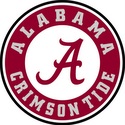|
nimper posted:Near as I can tell the turbo roundabout allows U-turns. You just can't go around more than once. Hah, welp, I totally did a dumb when looking at that drawing the first time, you're right. But this only works if you enter from the top or bottom. The "east/west" entrances don't allow for this.
|
|
|
|

|
| # ? Apr 27, 2024 18:31 |
|
RadioPassive posted:But this only works if you enter from the top or bottom. The "east/west" entrances don't allow for this. Huh. Yeah, that's annoying.
|
|
|
|
This Dutch site lists a bunch of designs based on the regular turbo (with drawings). Some of them seem to allow for u-turns from any direction. Also, the second from last entry shows an interchange based on the turbo. Apparently, a traffic design 'rule' in Holland is that bikes are separated from cars on roundabouts wherever possible, but cars get right of way in rural areas, while cyclists get right of way in urban areas. There's no true traffic rule on that, so signage is always required. Something that often causes a debate among Dutch drivers is how and when to signal turns while driving on a roundabout. One thing is clear: it is required by law to signal a right turn just before leaving a roundabout. But, do you signal left before entering the roundabout when you want to take the third exit? This means you turn off the signal and then signal a right turn while on the roundabout. The government says this is not required. In some other countries it's even forbidden to do so. In Holland it is not forbidden, and many driving instructors actually teach people to do it. The opponents simply say it's very confusing. Why would you use a left turn signal when you never actually make a left turn? You turn right onto the roundabout and when you leave the roundabout you turn right again. Also, when you're not on the innermost lane on a regular multi-lane roundabout, a left signal is certainly confusing. Proponents say that signalling left before entering a roundabout helps other drivers. For instance, if a truck driver who can't brake quickly approaches the roundabout from the south, and he sees a car entering the roundabout from the north, he has to decide whether to stop or not. If the car goes left, he has to stop. If the car goes right or straight ahead, there is no need for the truck to stop. If car drivers always signal left in time if they want to go that way, the truck driver in this example knows if a car is going to cross his path or not. So what's best? Signal left or not?
|
|
|
|
Carbon dioxide posted:So what's best? Signal left or not? We're taught to signal here, but it's rare to see it practiced in the field. Heck, I'm from Rhode Island, where turn signals are considered optional by at least half the population. (The joke goes, a Rhode Islander's car can have one million miles on it, but the "blinkas" will never burn out.) For my part, I signal at roundabouts, but I get the impression nobody seems to pay attention or care. A car approaching a roundabout isn't supposed to be able to see a car on the opposite side, by the way. We set up the landscaping so you can only see about 90 degrees ahead and behind. If there's a car in that 90-degree segment to your left, you yield. If not, you go.
|
|
|
|
Cichlidae posted:A car approaching a roundabout isn't supposed to be able to see a car on the opposite side, by the way. We set up the landscaping so you can only see about 90 degrees ahead and behind. If there's a car in that 90-degree segment to your left, you yield. If not, you go. Why is an approaching driver not supposed to see anyone on the other side?
|
|
|
|
Sloober posted:I'm a cyclist myself and much of that is pretty spot on; there are a lot of entitled rear end in a top hat cyclists that don't pay attention to traffic laws, namely that they think they are immune to them or that they don't apply. Stop signs are all over in my portion of the state, and that many choose to just blow through them when there is considerable traffic on all other sides is frustrating and more than a little dangerous. Sloober posted:WI state law considers them traffic/vehicle, so they are required to follow the laws as much as a car is - even speed limit laws. Carbon dioxide posted:So what's best? Signal left or not? Edit: This is actually required by law in NSW but it's never enforced. Some other states don't have laws regarding signalling so it's common to see interstate drivers just blow through without signalling or signal improperly (ie, every time they turn the wheel they activate the turn signal in that direction). ephphatha fucked around with this message at 04:15 on Jun 7, 2013 |
|
|
|
How would signalling work in the magic roundabout?
|
|
|
|
grillster posted:Why is an approaching driver not supposed to see anyone on the other side? If you can't see them you can't make decisions on what to do based on incoming traffic. It should be disregarded and is irrelevant to a drivers decision to yield or go, but a new driver may be tempted to yield when its not needed if they see traffic entering.
|
|
|
|
Would you people who have more than one traffic circle in your city find a traffic circle with 5 inlet/outlets unusual? This is the one we have in our neighbourhood, and everybody gets along just fine for the most part. The drivers handbook is pretty clear about how to do it; those outside the traffic circle yield to those inside it, and the outer lane yields to the inner lane. Though that latter bit seems to contradict what I gather most other circles work like. A picture of said circle:  But I guess somebody must have complained, because a few months ago they painted a bunch of stuff in it that ran contrary to that (that has since been scraped off by the snowplows), and put up signs like this:  The problem with those being that they seem to imply it's a 4 road traffic circle, rather than 5. Since all the paint got scraped off the road, and the signs seem ambiguous/agree with what the driver's handbook said, we're all back to doing it that way it seems. Still, it's the only two-lane traffic circle in the city, and while it's great, and I wish there were more of them, I also know this one scares the hell out of people. I know people who actively avoid it, and the local registries don't seem to test your ability to drive in it. Edit: also, I am terrified of having to do it on my bicycle, and have no faith in other drivers to not kill me. The few times I've been through it I'll just walk it like a pedestrian. PittTheElder fucked around with this message at 05:28 on Jun 7, 2013 |
|
|
|
mamosodiumku posted:How would signalling work in the magic roundabout? Take each roundabout individually, so for example if you're going to use the "outer circle" you'd signal left on the first roundabout, not signal on intermediate roundabouts, then signal left again on your exit rounabout. If you were going to use the anti-clockwise "inner circle," you'd signal right on approach, left for each intermediate give-way line and then right on exit (though there's at least one roundabout where it probably makes sense to think of the exit as straight on, not right.) People get scared by the magic roundabout and imagine that it requires some sort of mastery of motoring dark arts to cross it, but it's pretty simple if you just take it junction-by-junction. That's how I'd do it, at least. In practice it looks like the lane markings make indication largely redundant. https://www.youtube.com/watch?v=1z2LdPtX0C0
|
|
|
|
Surely this can't be right? My driver discovered the flaw in this roundabout when turning from Jutland Rd into Puni Road as he realized that following the marked roundabout would guide him into oncoming traffic. (We Drive on the left here)
|
|
|
|
Your... driver??
|
|
|
|
Well, workmate. He was driving. Anyway, I thought that roundabout was pretty weird and counter-intuitive.
|
|
|
|
Ephphatha posted:Here in Australia we get a few provisions, as long as you aren't travelling significantly faster than other vehicles and you don't have a speedo you're not going to get a ticket for speeding on a bicycle. If you have a GPS or something else mounted that shows speed, or it's obvious you're travelling faster than cars/motorbikes who are travelling the speed limit, you're getting booked. Before I read the second sentence, I was wondering for a second why you only get a ticket if you cycle too fast while wearing swimming briefs.
|
|
|
|
Carbon dioxide posted:Before I read the second sentence, I was wondering for a second why you only get a ticket if you cycle too fast while wearing swimming briefs. Anyone wearing speedos while biking should be pulled over nonetheless for public indecency.
|
|
|
|
grillster posted:Why is an approaching driver not supposed to see anyone on the other side? It's extraneous information. We don't want an inexperienced driver to yield unnecessarily, and we don't want people distracted from the task at hand. At night, an opposing car's headlights could make it tough for you to see, as well. mamosodiumku posted:How would signalling work in the magic roundabout? Put on your hazard lights and gun it. That works for every roundabout, right? PittTheElder posted:Would you people who have more than one traffic circle in your city find a traffic circle with 5 inlet/outlets unusual? Roundabouts are one of the preferred method of dealing with complex intersections like that. However, I've never thought of how to deal with multi-lane approaches. I guess you'd have to make custom signs, because the typical left-right-through nomenclature wouldn't really work. As far as turn signals, anything less than 180 degrees is a right turn, anything more is a left turn. Jaguars! posted:Surely this can't be right? It doesn't make much sense as a roundabout, assuming the main road doesn't ever have to yield. Pretend it's just a painted island, though, and life is much, much easier. I had to design one of those in New Haven with the added complexity of a bus stop right in the middle of the island.
|
|
|
|
Someone mentioned traffic lights on roundabouts in the UK before. I have no idea how that started but they're everywhere now and I don't know if they're even a benefit or not. Anyone got any well-sourced information about them.
|
|
|
|
In Britain we use roundabouts too much, often where a free flowing junction would probably be more suitable. Signals will be put in when a large roundabout simply cannot cope with the amount of traffic that uses it. These roundabout will often be massive in size with 3, 4 or even 5 lanes going around and anything up to 7 branches around the thing, and I guess the idea is just to make yielding to traffic to be one less thing for users to worry about, and with smart timing you will pass through most of the signals at green. The roundabouts will also have lanes marked in a similar way to turbo roundabouts, without the physical barriers. Here is one example of a roundabout with too much going on for no signals. This is another but has a few other problems as well (probably more accurately described as a gyratory as these streets were there long before this was a roundabout). Signals are also used in the more legitimate situation of one road dominating the flow of traffic through a roundabout, meaning that vehicles from the minor roads never get a chance to get on, yet the layout may still be too complicated for a normal crossroads while not being important enough to warrant freeflow. http://www.cbrd.co.uk/histories/roundabouts/05.shtml talks about it a bit. Oh and this is what the Department for Transportation has to say . Looks like it says everything you need to know about them. nozz fucked around with this message at 15:41 on Jun 7, 2013 |
|
|
|
Whoops... http://blog.al.com/spotnews/2013/06/aldot_to_replace_i-459_electro.html#incart_flyout_news Sadly there aren't really any good high res images of this, or what it looked like before it was cleared up. One of the dump trucks doing road work left their bed left up hit it and knocked the sign down. 
|
|
|
|
uapyro posted:Whoops... RIP, sign  Another life cut short by a careless dump truck driver.
|
|
|
|
On the topic of traffic circles and bicycles/transit, what do you think of the traffic planning in Milton Keynes? It's a city that was built from the ground up in the 60s, so the designers and engineers had free reign. They decided to build a 1km x 1km (~0.63 mile) grid of major roads and structure the city around these. In the original design, these were meant to be 30 mph roads lined with mixed commercial and residential zonings, to be the core of the community, and with traffic lighted intersections. However, in the final design, the engineers decided to turn them into 70mph dual carriage freeways with traffic circles at every intersection. The result was a city made up of tiny islands of suburbia with few amenities, very poor pedestrian and bicycle access, and a generally lovely transit system (due to there being few places where buses can safely stop). Most of the amenities have ended up in the city centre, which looks like a gigantic strip mall, complete with massive, largely empty parking lots. Mode share is about 70-80% private vehicles, way above the national average, and more in line with a city in the south-eastern United States than south-east England. There's a separated network of bike lanes, but these are incredibly poorly designed, and their safety record plus low cycle use are often used as a strawman to argue against any kind of separated cycling infrastructure in the UK at all. Of course, car traffic moves very freely. Article in Traffic Engineering + Control making the strawman argument against separated bike lanes A blog post providing good counter-arguments, with photographs of the terrible, terrible design of the separated bikeways An article in the Journal of Urban Design by one of the original designers, explaining what went wrong.
|
|
|
|
Lead out in cuffs posted:On the topic of traffic circles and bicycles/transit, what do you think of the traffic planning in Milton Keynes? I was just looking at that town on street view the other day and was struck by how horrific the entire city is. I hope they make it a unesco herritage site or something in the future because I don't think you could create a worse planned city that so perfectly represents all the most rear end backwards idiotic planning ideals of the mid-century.
|
|
|
|
Lead out in cuffs posted:Milton Keynes My grandparents lived in MK for most of my life. For motorists, driving is a breeze. Everything flows free on the grid system, with a few exceptions (such as Central Milton Keynes). For pedestrians, cyclists, public transit users...yeah, forget it. The Redway is hopeless, and is a scary place to be at night. The "islands of suburbia" were really designed as mini rural villages. Inside each of those 1 km squares, there was provision for some commercial space that residents can walk to. Some squares ended up with mini strip malls in the center, with a tiny grocery store, pharmacy, a couple offices, etc. Others got space for totally unsustainable convenience stores that never stayed open more than a year. Everything else was initially squeezed into the center, which looks like a Midwestern suburb designed by a depressed Mies van der Rohe on a rainy day. You can't even comfortably walk around the center, because it's all parking lots and badly signed roads. The pedestrian/cyclist/public transit situation can't be improved without major infrastructure changes. I can't help thinking that they almost got it right, but needed a few tweaks--larger commercial zones spread out, aligning the Redway closer to the actual grid--it could have been successful.
|
|
|
|
Does the department of transportation handle the planning and creation of drainage ditches and such, or is that some other government group? Roads and drainage systems certainly seem pretty intertwined.
|
|
|
|
Where I live there's just a "works" department that coordinates all that sort of stuff. Within the works department there's of course tons of little sub departments but they all work together.
|
|
|
|
SlothfulCobra posted:Does the department of transportation handle the planning and creation of drainage ditches and such, or is that some other government group? Usually it's handled side by side with the actual roadway design, that way you can be sure to get your catch basins in the right spot and drain everything where it has to go. Sometimes the underground utilities (which includes storm sewer) gets contracted out if a company doesn't handle that often. My firm usually does the whole thing; road, sewer, water, storm etc. We're designing all the underground work for another firm on one of our projects though; they contracted us to handle it. If my state's DOT does a project, they also typically design the stormwater work for it. Underground is almost always done if the roadway is being reconstructed so you dont have to go rip it out later to put in a new line because the old one is under capacity. Sloober fucked around with this message at 21:29 on Jun 11, 2013 |
|
|
|
Kakairo posted:The pedestrian/cyclist/public transit situation can't be improved without major infrastructure changes. I can't help thinking that they almost got it right, but needed a few tweaks--larger commercial zones spread out, aligning the Redway closer to the actual grid--it could have been successful. I think the main and biggest mistake they made was in turning the grid into a freeway system, rather than the network of urban high streets it was intended to be. At least, that's what the article I posted in that last link argues -- and the author was one of the original design team. I've found a PDF since then: http://discovery.ucl.ac.uk/4642/1/4642.pdf Michael Edwards posted:For all these reasons I submit that Milton Keynes is not the place it might have been. The view from the road—the experience of getting around—is in fact what you see when speeding along expressways, lined with fine planting, with occasional slip-roads off to named, but invisible, neighbourhoods, workplaces and services. Buses follow circuitous routes and are thinly patronised. Most local shopping centres struggle to maintain viability, tucked away and dependent on their designed ‘catchment areas’. Pedestrian routes are often segregated from the roads and the typical resident may have quite a long walk to the bus, often through woodland which can be dripping and rather scary. Travel is overwhelmingly by car (especially for men) with buses tending to carry women and children. The segregated cycle paths work well, however, and redeem the situation for many people, especially older children and young adults. His suggestions for fixing things are to set the speed limit to 30mph, replace traffic circles with traffic lights, and rip up the forests lining the grid, to be replaced with high density commerce. This would bring it back in line with how the original plan was intended to be. Fat chance of any of that happening, though.
|
|
|
|
Lead out in cuffs posted:replace traffic circles with traffic lights YOU CANT CUT BACK ON ROUNDABOUTS. YOU WILL REGRET THIS
|
|
|
|
Lead out in cuffs posted:I think the main and biggest mistake they made was in turning the grid into a freeway system, Freeways would have been (A)M-roads, you're talking about four lane arterials
|
|
|
|
Friends live in a Melbourne suburb that is like planning gone wrong, called Gowanbrae. It's a dead space between a highway and a rail line, so it has one way in and out. And a mini strip mall with a chip shop and a beer shop (or whatever they call it there.) it's kind of depressing. Oh, and the houses cost ludicrous amounts of money of course, despite being next to a highway and being tiny.
|
|
|
|
Lead out in cuffs posted:His suggestions for fixing things are to set the speed limit to 30mph, replace traffic circles with traffic lights, and rip up the forests lining the grid, to be replaced with high density commerce. So...Midwestern suburban hell?
|
|
|
|
So Milton Keynes is basically what would happen if we dropped an LA Suburb into England, am I getting that right?
|
|
|
|
Peanut President posted:So Milton Keynes is basically what would happen if we dropped an LA Suburb into England, am I getting that right? No, not really. It's some kind of arcane horror loosely inspired by American suburbia, yet way too different.
|
|
|
|
Peanut President posted:So Milton Keynes is basically what would happen if we dropped an LA Suburb into England, am I getting that right? Not quite.  Click to embiggen. Looks pretty from above, nice and green. Notice the one large gray area, with the town name--that's Central Milton Kenyes (or Centre:MK as it's styled nowadays). That's where almost all of the shopping and entertainment is. Now zoom out a bit.  That's the whole area. Want a supermarket? Go to Central Milton Kenyes. Movie? Central Milton Keynes. Train or bus to London? Guess where you go. Now, it's not quite as bad as it used to be, since there are now some satellite shopping areas around the town (most of the other large buildings you see are warehouses), but you still have the majority of the commercial focus in one spot that is only accessible by car. Having the trees right up against the grid in the residential areas is nice, as it reduces noise and makes the residential zones cozier, but to do so at the expense of regular sidewalks and pathways (and relying on the Redway instead) is ludicrous. Not that you want your pedestrian pathways alongside 70 MPH traffic, but you get what I mean. There is one image that sums up Milton Keynes best. You could see it from my grandparents' back window. I present the town's most famous artwork, the Concrete Cows: 
|
|
|
|
Oh my god. Who would do such a thing? edit: It reminds me of "Modernist" plans, was that the idea? They also valued cars and rigid structure. Such as Paris in an alternate dystopian future: 
Peanut President fucked around with this message at 03:51 on Jun 12, 2013 |
|
|
|
Current Paris is itself some random officials' "knock down everything we can and build something modern*" planned design. *not modern as in the specific school of thought but modern as in the latest design thinking of its time.
|
|
|
|
Peanut President posted:Oh my god. Who would do such a thing? Le Corbusier was a very sick person. It's mystifying as to why he was so influential at the time.
|
|
|
|
The interesting thing about Milton Keynes is that all the grid roads have their own independent numbering system based on the direction they go with V for north-south and H for east-west. They are even signed as such on the ground but they are becoming less prominent as time goes by. Another interesting thing is that Milton Keynes is home to the UKs first and (thankfully) football franchise, MK Dons. This was formally the London football club Wmbledon which was brought out then for some reason moved up to the new town because they wanted a football team or something. They are pretty much hated by everyone because of how they took a well known but financially struggling team and just hosed them over. Finally this town is one of very few new towns of the post war era that was actually fully built to plan so there's that too I guess.
|
|
|
|
Hedera Helix posted:Le Corbusier was a very sick person. It's mystifying as to why he was so influential at the time. I'm busy reading The Death and Life of Great American Cities (which thoroughly excoriates Le Corbusier and the consequences of his planning, especially on socialised housing in the US). The most ironic thing is that Le Corbusier was apparently a syndicalist, and a lot of the Modernist designers had communist leanings (e.g. Niemeyer who built Brasilia to Le Corbusier's principles), yet their designs have only made things worse for the poor, and better for the rich. Install Gentoo posted:Current Paris is itself some random officials' "knock down everything we can and build something modern*" planned design. I get the impression that "modern" urban planners see Haussmann's design principles as a kind of antidote to the worst aspects of the Modernists. It's interesting that one of the strawman arguments that seems to be raised against Jane Jacobs is the claim that she was advocating against urban planning enitrely. So far I have yet to see this in her book. She just advocates the right kinds of urban planning: taking an approach that works with the emergent processes of city growth, rather than against them. Planning itself is not bad, just planning that caters to automobiles at the expense of all other modes of transportation.
|
|
|
|

|
| # ? Apr 27, 2024 18:31 |
|
I've seen someone make plans for a theoretical redesign of Paris where they replaced all the roads with parks and grass, and decided that all transit could take place on subways.
|
|
|
















 Yes, it's like a lava lamp.
Yes, it's like a lava lamp.
























